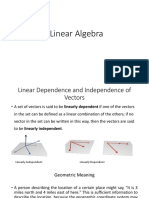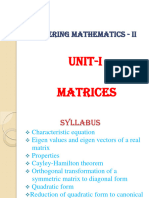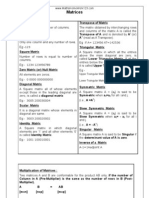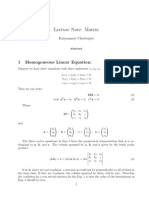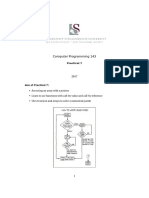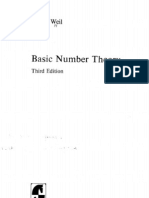0% found this document useful (0 votes)
47 views22 pagesMaths Case Study
The document discusses matrices and calculus concepts including:
1) The characteristic equation of a matrix A is defined as det(A - λI) = 0, where λ are the eigen values of A.
2) Cayley-Hamilton theorem states that every square matrix satisfies its own characteristic equation.
3) The eigen values and eigen vectors of a real matrix A can be found by solving the characteristic equation of A.
4) A symmetric matrix A can be orthogonally transformed into a diagonal matrix where the diagonal elements are the eigen values of A.
Uploaded by
NitkrisCopyright
© © All Rights Reserved
We take content rights seriously. If you suspect this is your content, claim it here.
Available Formats
Download as DOCX, PDF, TXT or read online on Scribd
0% found this document useful (0 votes)
47 views22 pagesMaths Case Study
The document discusses matrices and calculus concepts including:
1) The characteristic equation of a matrix A is defined as det(A - λI) = 0, where λ are the eigen values of A.
2) Cayley-Hamilton theorem states that every square matrix satisfies its own characteristic equation.
3) The eigen values and eigen vectors of a real matrix A can be found by solving the characteristic equation of A.
4) A symmetric matrix A can be orthogonally transformed into a diagonal matrix where the diagonal elements are the eigen values of A.
Uploaded by
NitkrisCopyright
© © All Rights Reserved
We take content rights seriously. If you suspect this is your content, claim it here.
Available Formats
Download as DOCX, PDF, TXT or read online on Scribd
/ 22




